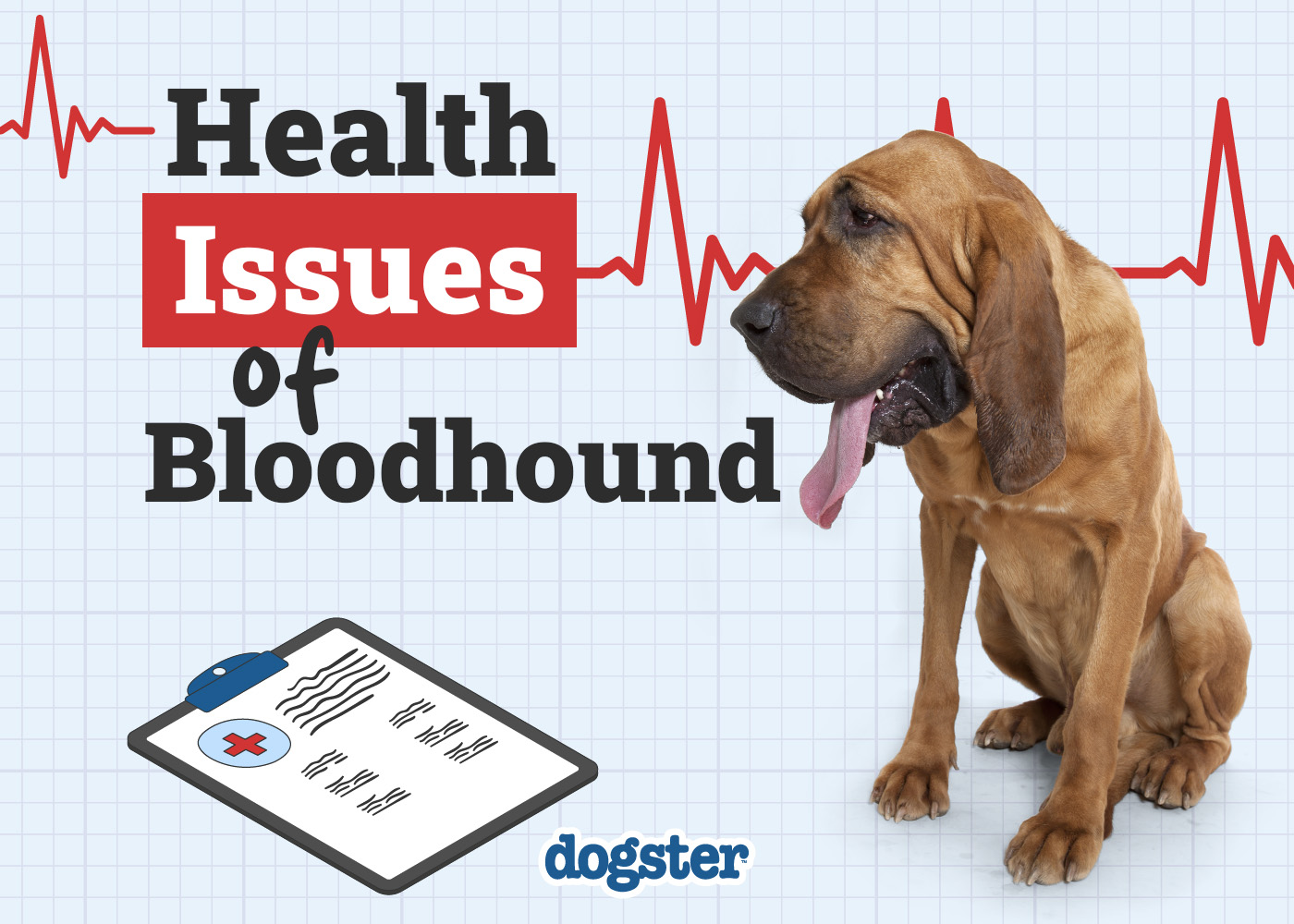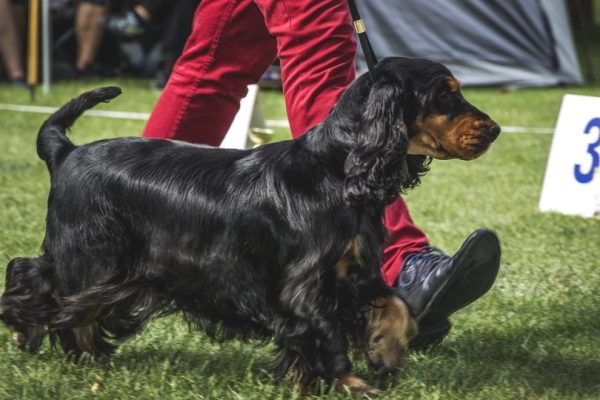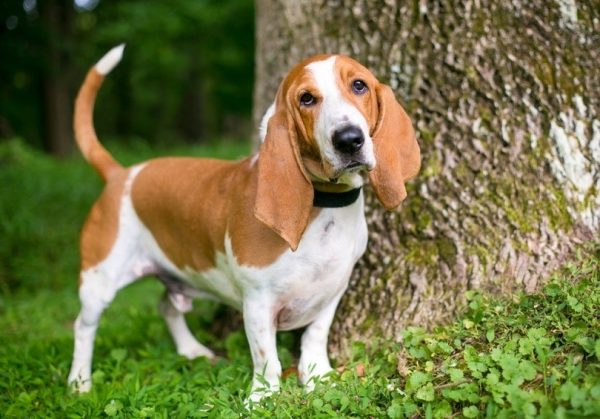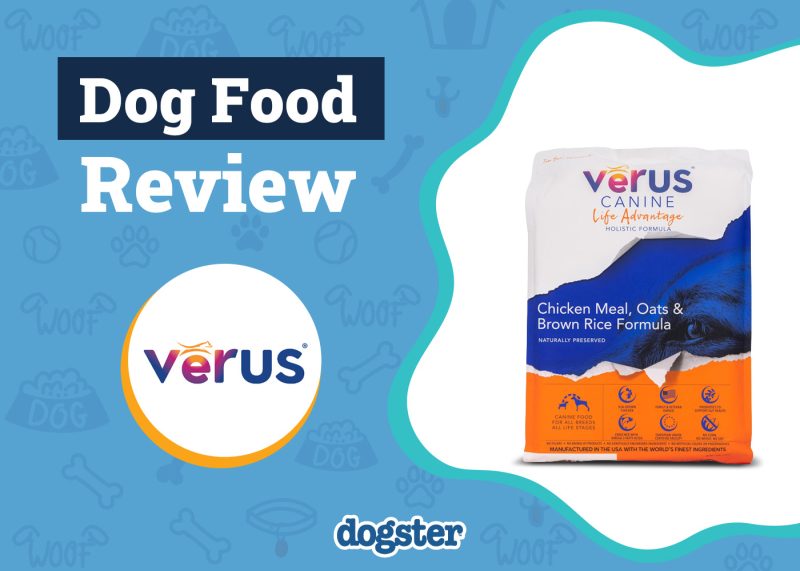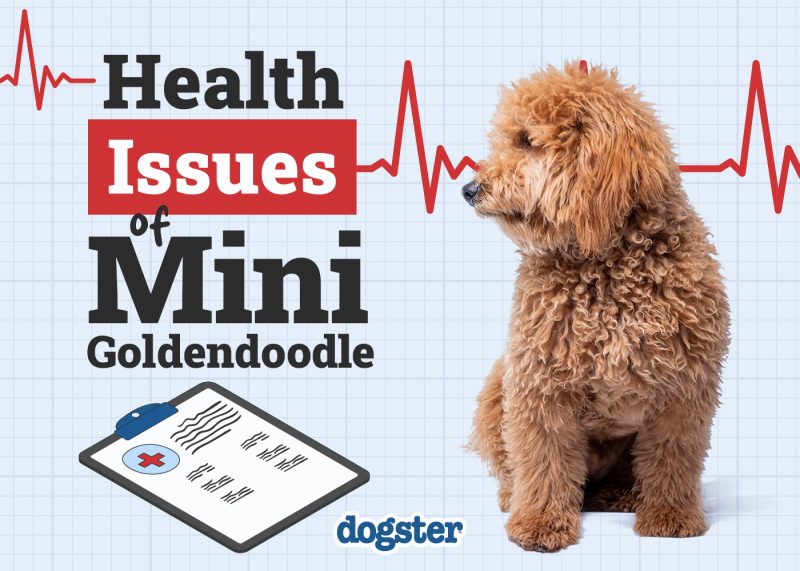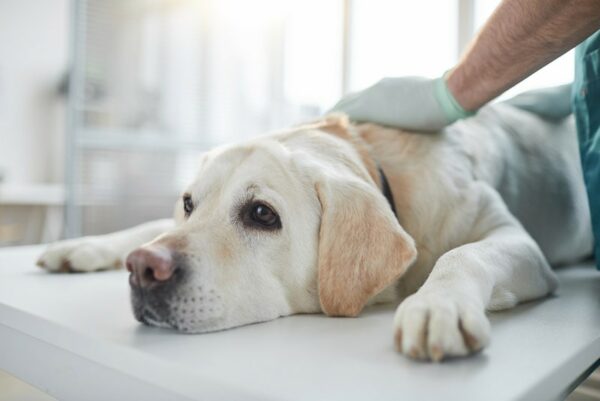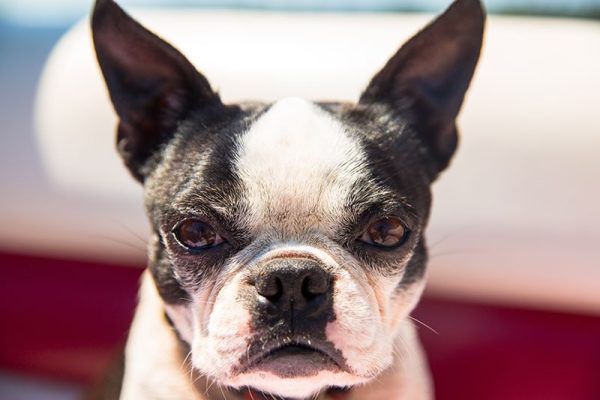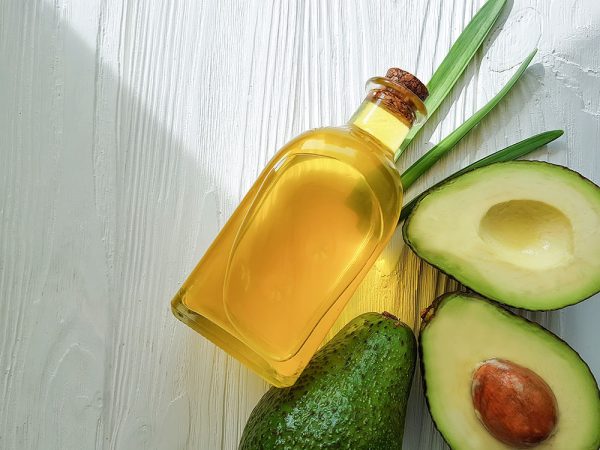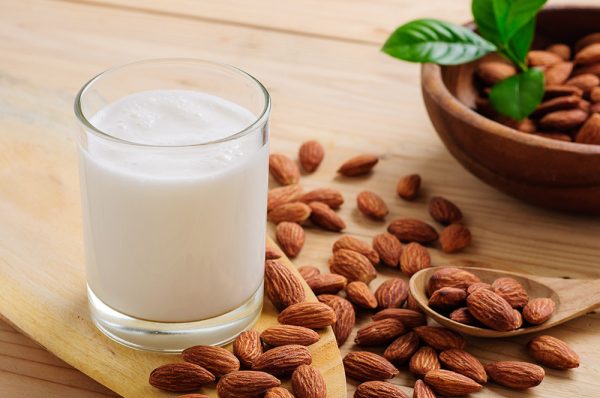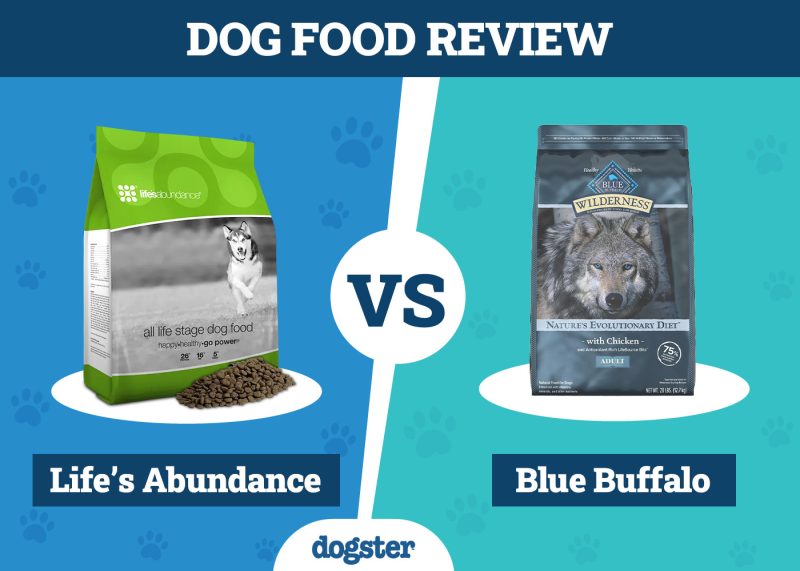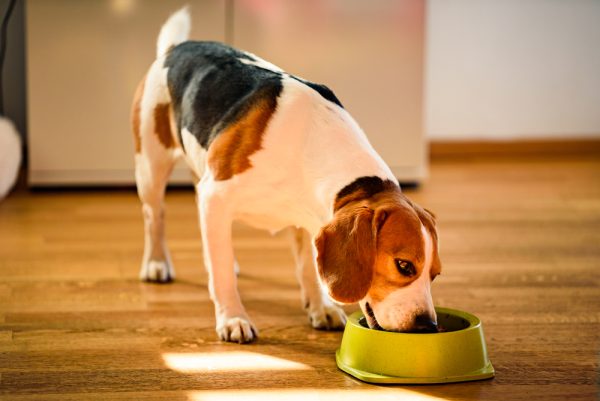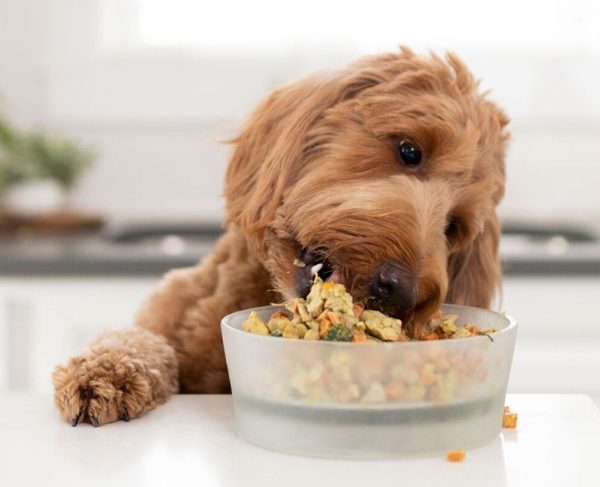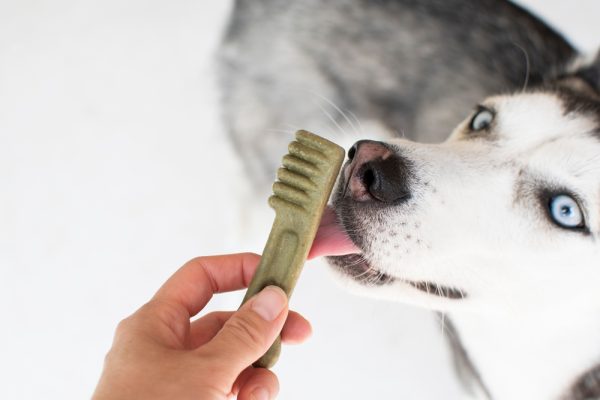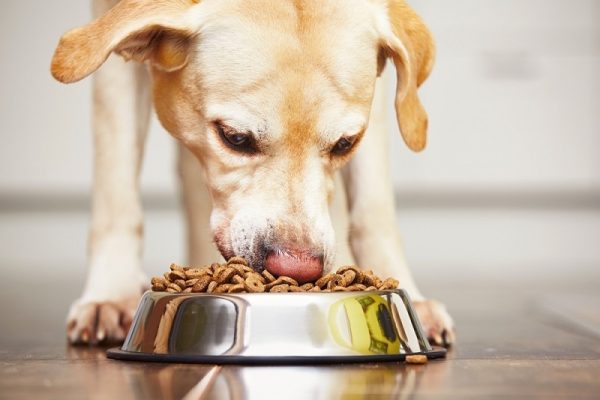Bloodhounds are an iconic and loveable breed. You’ll find them in some of your favorite novels and movies, as the stars of advertisements, but also on the ground hunting not just for food but saving lives. Every bit of their respect and popularity is well deserved, but they have several health issues to be aware of if you’re going to welcome one of these rambunctious, super sniffers into your home.

The 10 Bloodhound Health Issues
1. Gastric Dilatation and Volvulus (GDV)
More commonly known as bloat, this is a severe medical emergency. In large, deep-chested dogs, if their stomach bloats, it can also begin to twist around on itself, cutting off the blood supply and outflow of the stomach. This causes it to bloat even larger, which can twist other organs and press on and close off major veins for the rest of the body.
A dog experiencing a GDV can very quickly go into shock, develop cardiac arrhythmias, and experience the fatal death of organ tissues like the stomach and spleen. Without care, these pets can pass in as little as an hour.
All dogs, especially males, that are expected to be over 100 pounds are at a higher risk of bloat, a category that Bloodhounds do fall into. They also have exceptionally deep chests, meaning the distance from their spine to the bottom of their ribs is much larger than the width of their ribs.
Bloodhounds should receive a prophylactic surgery (known as a gastropexy) when they are about 6 months old. A gastropexy fixes the stomach into place against the abdominal wall to prevent twisting when bloating happens, leaving them with an uncomfortable bloat but no life-threatening volvulus.
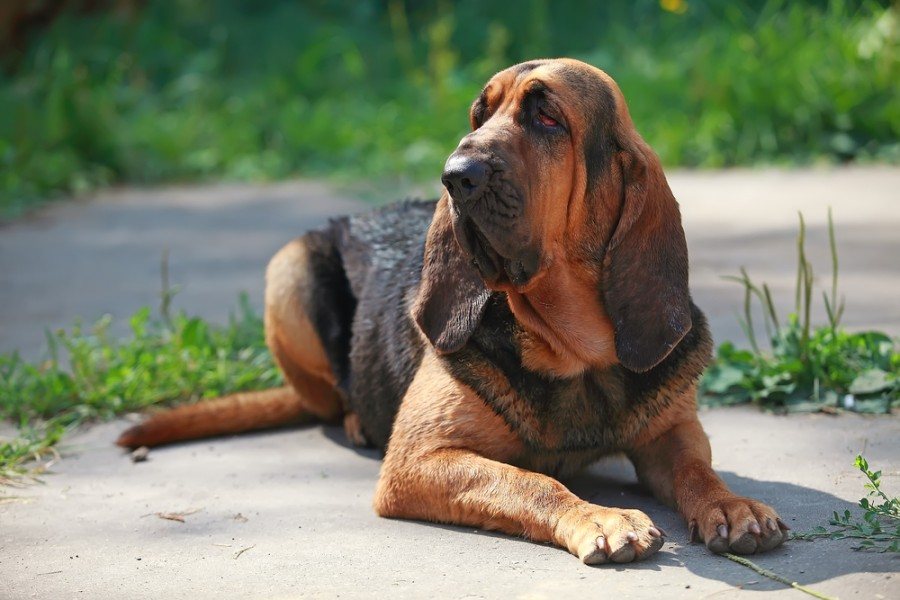
2. Cherry Eye
Cherry eye is the term for the prolapse of a dog’s third eyelid. Unlike humans, dogs have a pink, hairless “eyelid” that extends from the middle corner of the eye out sideways. Usually, this happens when they blink, and it helps to spread tears across the eye to support a healthy cornea. At the base of the third eyelid is a gland critical to produce tears in a dog’s eye.
The gland is located where you can’t see it by the anatomy of the third eyelid, but with cherry eye, the gland pops out and is stuck sitting at the inside corner of the eye, exposed to the elements and not being covered by any eyelids.
When a dog develops a cherry eye, it makes them significantly more susceptible to dry eye conditions, trauma to the gland, and disorders of the cornea. This can be fixed surgically, though increased risks of other eye disorders still remain afterward, just to a lesser degree.
Bloodhounds have been bred with distinctive long pendulous ears, a wealth of extra skin, especially around the face and neck, and sad, droopy eyes. Unfortunately, this breeding behind their easily identifiable face predisposes them to several eye and face-related health issues, such as cherry eye.
If you are concerned about the well-being of your pet, we recommend getting in touch with a vet for guidance.
If you need to speak with a vet but can't get to one, head over to PangoVet. It's our online service where you can talk to a vet online and get the advice you need for your pet — all at an affordable price!

3. Entropion
Entropion describes an eyelid that rolls inward toward the eye’s surface, which can cause the eyelashes to rub against the eye. In most cases, it is the lower lid that is affected, and it is due to the lid being overlong or loose (or both). Due to the excessive facial skin of Bloodhounds, this isn’t an uncommon issue to encounter.
Surgical procedures to tighten up or properly align the eyelid can be performed. In young puppies, sutures can also be placed to pull the skin in desired directions around the eyelids and even eyebrows with no incision made, which can help the muscles in the area support the eyelids in the direction we want as they develop. Some Bloodhounds may outgrow their entropion with time as their heads grow and develop.
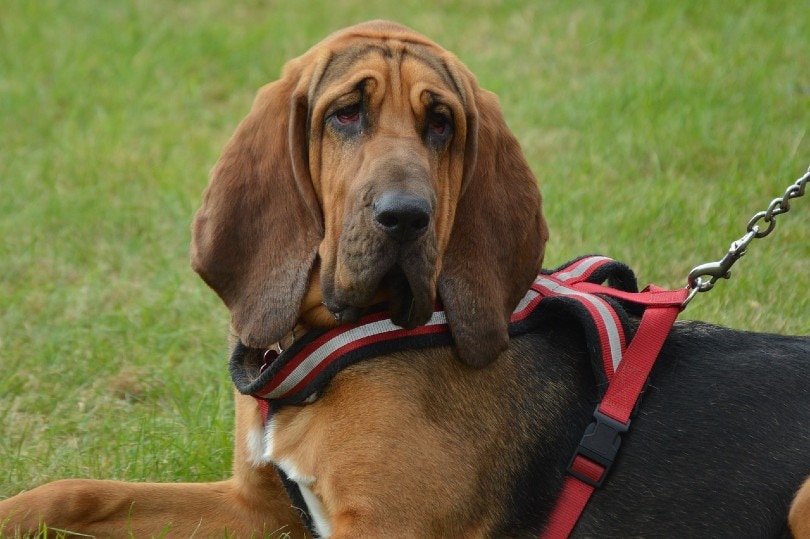
4. Keratoconjunctivitis Sicca (KCS)
KCS is a dry eye condition caused by a lack of tear production. Corneal ulcers can develop without tears for lubrication and to maintain a healthy cornea. They are areas of abrasion or degeneration on the cornea’s surface, which, if untreated, can get progressively deeper until the eye globe ruptures.
Treatment for KCS usually consists of administering eye drops that increase tear production in the affected eye(s). Bloodhounds can be genetically predisposed to KCS or develop it secondary to some of their other eye conditions, such as cherry eye or entropion, if those conditions occur.
5. Hip Dysplasia
Hip dysplasia is a developmental orthopedic disorder. Most dogs with hip dysplasia begin showing signs before they turn a year old. Laxity in their hip joint leads to subluxations or full luxations, remodeling of the head of the femur, and significant arthritis and degenerative joint disease.
This genetic condition is most common in large-breed dogs, and Bloodhounds are an affected breed. Signs can include hip swaying while walking, bunny hopping, painful hips, unwillingness or inability to fully flex and extend the hips, walking with very straight back legs, and muscle loss in the hindlimbs.
The diagnosis is usually made with X-rays of specific hindlimb positions to show the changes at that hip joint. Most Bloodhounds with hip dysplasia will need surgery because the condition is too painful otherwise.
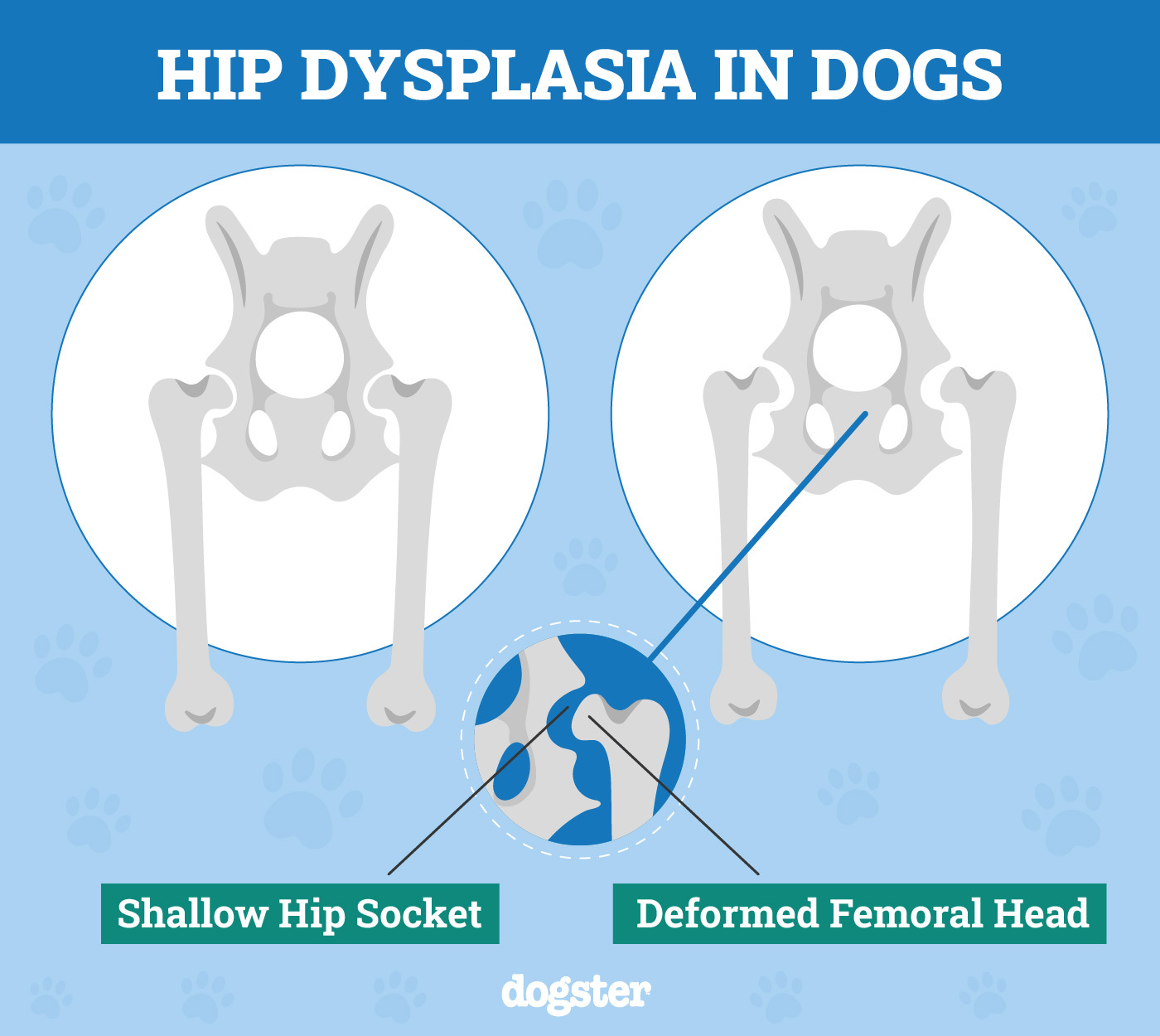
6. Elbow Dysplasia
Like hip dysplasia, elbow dysplasia is a degenerative joint disease of the front limb at the elbow. Elbow dysplasia has four changes that can happen over time and is often very painful. X-rays and a physical exam are the best way to diagnose it, and it can be treated with surgery and supportive therapy.
Elbow dysplasia mostly affects large-breed dogs like Bloodhounds, though it isn’t as common in the breed as hip dysplasia.
7. Patellar Luxation
The patella is another name for the kneecap. The kneecap sits inside a tendon at the end of the quad and helps protect the tendon as it crosses over the top of the knee joint and inserts to the top of the tibia. In the dog, the end of the femur has two grooves that the patella moves up and down within unless it “floats” or luxates, which means it crosses either toward the inside or outside aspect of the limb, leaving the valley of the groove.
Patellar luxations can be classified by severity and in which direction the luxation happens. Small dogs are usually more likely to suffer from it, but Bloodhounds are an example of large dogs that can as well. It can be treated surgically when needed, but it depends heavily on the severity.
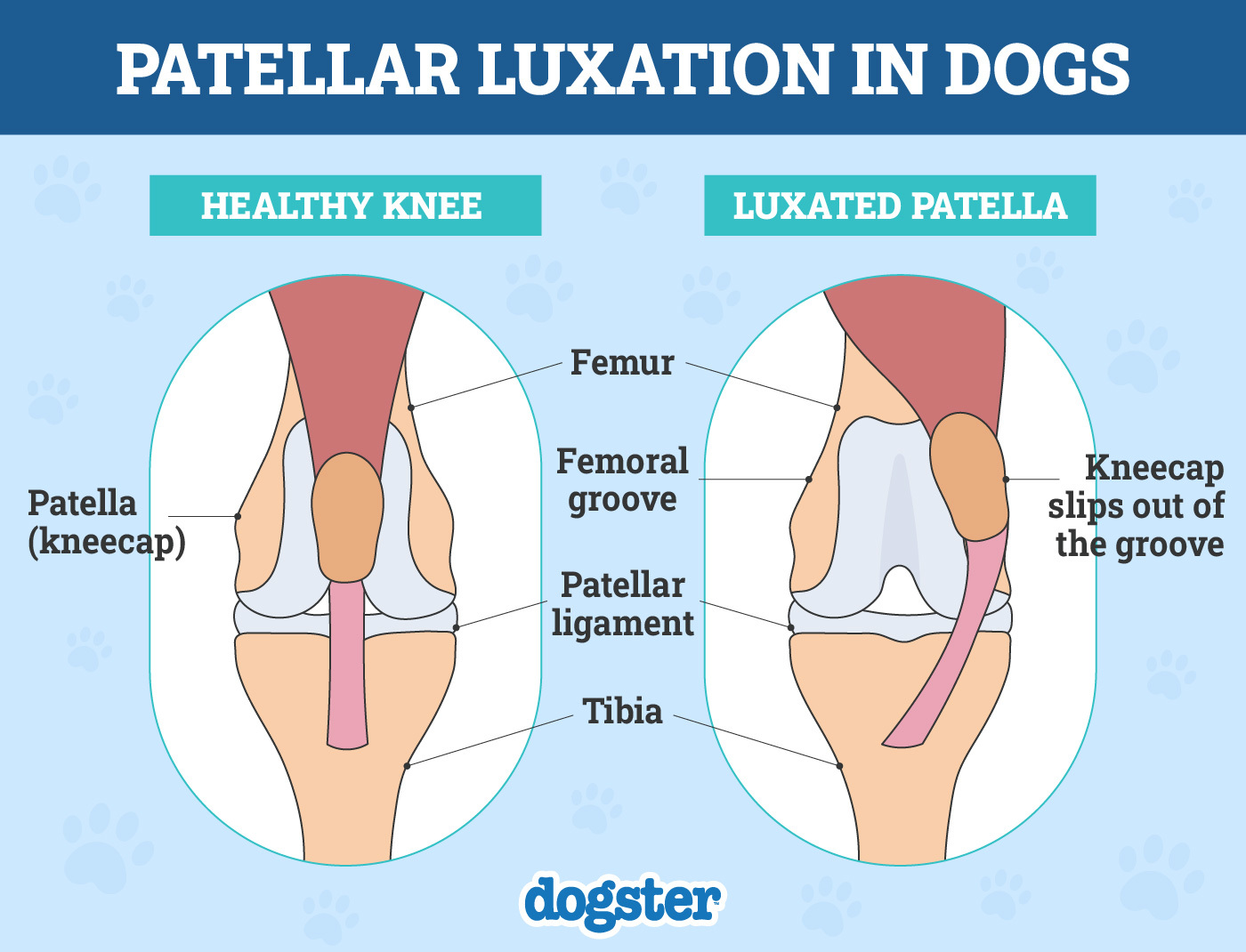
8. Cancer
Bloodhounds, as large-breed dogs, are unfortunately prone to several cancers. Osteosarcoma, lymphoma, mast cells, and soft tissue sarcomas are some examples. Some of these cancers can be easily seen from the outside, such as on the skin, but some may be harder to tell with less obvious signs.
Bloodhounds receiving annual physical exams and lab work screenings may have the advantage of early diagnosis, which can significantly improve their prognosis.
9. Ear Infections
Thanks to those long, drooping ears, Bloodhounds are at risk of trapping water in their ear canals, which can cause ear infections. If your Bloodhound has allergies, that is another potential reason for chronic ear infections. Be sure to avoid getting water under a Bloodhound’s ears during bath time and to clean their ears with ear cleaner after swimming (or puddle diving) sessions.
10. Skin Fold Dermatitis
The many skin rolls around the face and neck that make Bloodhounds so adorable can trap moisture if they’re deep enough. The skin can become irritated and inflamed and develop bacterial or yeast infections in these folds. It’s usually a more significant problem for puppies, as their folds are less pronounced once they grow into them, but any Bloodhound at any age can be affected.
There are over-the-counter, medicated facial fold wipes that you can keep on hand for daily maintenance to avoid any issues from their floppy anatomy.


Summing Up
Most of a Bloodhound’s health concerns are related to their large-breed status or their roly-poly skin. With responsible breeding and regular checkups, they are fantastic and healthy dogs that make excellent working dogs or family pets. Be sure to focus on joint care for them regardless, and hopefully, they’ll be with you for years to come.
- Next on your reading list: Interesting Bloodhound Facts You’ll Love to Discover
Featured Image Credit: Huckleberry14, Shutterstock
